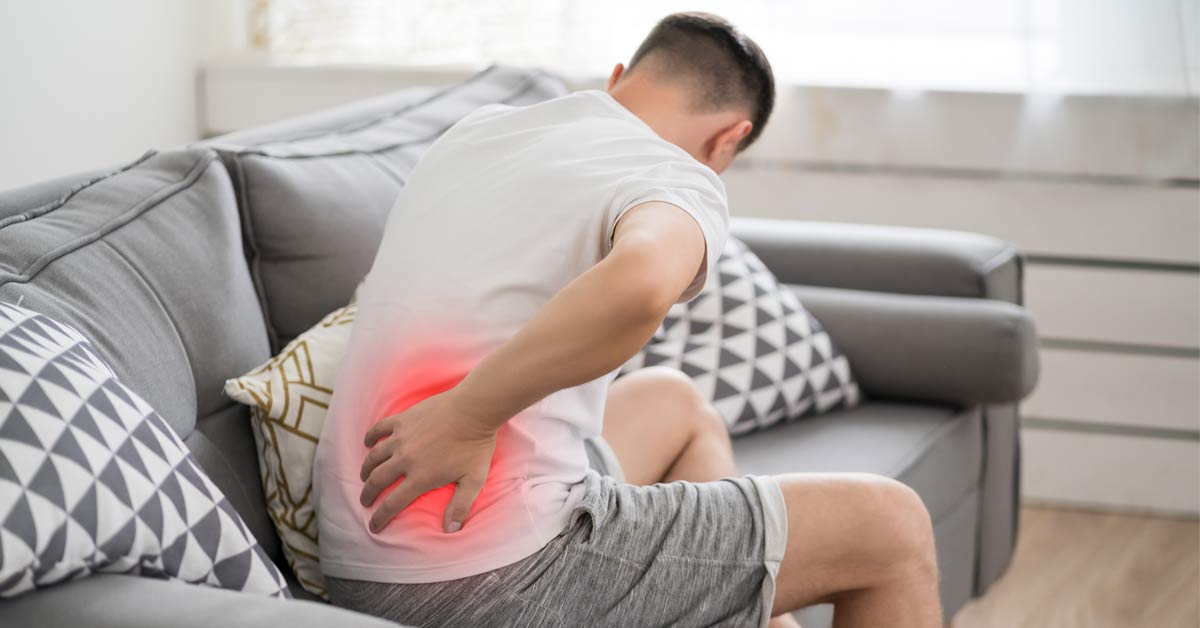Most people experience back pain at some point in their lives. It can come from overactivity, poor posture, or an uncomfortable night’s sleep.
Sometimes, however, back pain feels sharper or stronger. It may be paired with other symptoms like nausea or trouble urinating.
Kidney stone pain vs back pain can feel similar. However, important differences can help you figure out whether you may need rest or a trip to the doctor.
Where the Pain Happens Matters
One of the clearest ways to tell the difference between kidney and back pain is by location.
Kidney stone pain usually starts in the back or side, just below the ribs. This area is known as the flank. The pain often stays on one side and can move downward toward the lower abdomen or groin as the stone travels.
Typical back pain tends to be felt in the lower back, right over the spine or muscles. It may occur on both sides. It usually radiates into the buttocks or down the leg.
Pain that moves around to the front or into your groin is more likely caused by a kidney stone.
Kidney Stone Pain vs Back Pain
The intensity and type of pain you are experiencing can give you significant clues as to what is causing it.
Pain related to kidney stones is often severe, sharp pain that comes on suddenly. Many people describe it as one of the most intense pains they’ve ever felt. The pain can come in waves: getting worse, easing up, and then flaring again. No position brings lasting relief, and people often find themselves pacing or shifting constantly, trying to feel better.
Back pain can range from mild to severe, but it’s usually more of a dull ache, stiffness, or soreness. If you pull a muscle, it may feel sharp or shooting when you bend, twist, or move a certain way. You may also notice tightness or spasms.
What Makes Back Pain Better or Worse?
The triggers and timing of your pain can also help you tell the difference.
Kidney stone pain can start without warning while you’re resting, sleeping, or sitting still. It’s not typically triggered by physical activity. Pain does not improve with movement or rest. In fact, lying down often doesn’t help at all.
Back pain is often tied to movement or posture. You might notice it flares when you lift something, twist your spine, raise your leg, or stay in one position too long. Stretching, changing positions, or resting usually helps bring some relief.
Symptoms of Kidney Stone Pain vs Back Pain
Kidney stones and back pain go their separate ways when it comes to added symptoms. Kidney stones almost always come with more signs, while back pain typically stays in the back.
Kidney stone symptoms may include:
- Burning or pain when urinating
- Urgent or frequent need to urinate
- Blood in the urine
- Cloudy or foul-smelling urine
- Nausea or vomiting
- Fever and chills if there’s also an infection
Back pain symptoms may include:
- Muscle soreness or stiffness
- Pain that spreads to the buttocks or leg, known as sciatica
- Tingling or numbness in a leg or foot
- Spasms that feel like tight knots in the muscles
If you’re having urinary symptoms, nausea, or fever, along with back pain, you’re more likely to have a kidney issue rather than a muscle or spinal disc problem.
Should I See a Doctor?
Some concerning symptoms that mean you should get medical attention right away include:
- Severe pain that doesn’t improve with rest or medicine
- Pain that comes in waves and gets worse over time
- Blood in your urine
- Difficulty urinating
- Fever and chills with back or side pain
- Nausea or vomiting that doesn’t go away
- Sudden leg weakness or numbness
- Loss of control over bladder or bowels
- Back pain after an injury or accident
If your back pain is intense, keeps returning, or comes with unusual symptoms, don’t ignore it. Even if you’re unsure what’s causing the pain, your doctor can perform an assessment, imaging tests, and a urine analysis to diagnose it.
Don’t continue to wonder whether you have kidney stone pain vs back pain – schedule an appointment today!
Related:
- What Causes Kidney Stones and How to Avoid Them
- Kidney Stones: 8 Things You Should Know
- Kidney Stone Rates are Rising – How to Reduce Your Risk
- 4 Dangers of Dehydration for Your Urinary Tract

